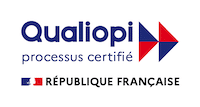Identifying the different stages leading up to a sale, and defining the best internal organization to achieve it, raises many questions. And it's all the more difficult for software publishers, whose business model is currently undergoing unprecedented change.
From "On Premise" to "Saas": after the technological leap, make the commercial leap
Defining a company's business model is a bit like designing a car's engine: if you neglect this step, you can give it all the fuel in the world later on, but it's not likely to make any headway or win any races!
In other words, to place your solution at the top of the "EY-Syntech Top 250" and before recruiting an armada of sales people ready to do battle, make sure you know exactly what they'll have to do, and in what order!
This is no mean feat in the specific context of software publishers...
While the advent of the Cloud was primarily a technological challenge with a strong business impact (developing or migrating solutions to SaaS mode), this was far from its only impact.
The gradual shift from the "On Premise" model (based on the sale of a license, often accompanied by a subscription to a maintenance service) to the "Saas" model (based on monthly subscriptions) has profoundly changed the economics of companies in this sector.
The impact on their cash flow has been enormous: where previously they could count on substantial cash inflows at the time of sale, and then count on a long-term "annuity" thanks to maintenance and updates, they now have to wait 3 to 4 years for a SaaS solution sold on a subscription basis to generate sales equivalent to those of its "On Premise" version!
The time it takes to bring a solution to market and make it profitable is not at all the same as it used to be! Especially as the R&D costs of this transition must also be covered.
A new business model has thus been established. But publishers have not always taken the full measure of the changes this will entail in terms of sales... And here too, the change of direction represents a real challenge.
What is the best sales organization for a software publisher today?
Of course, not all vendors are equal when it comes to integrating the cloud into their offerings, or to the maturity of the commercial transition that accompanies it. It's hard to compare the situation of new entrants "born in the cloud", who are betting everything on their technological lead, with that of historic players who have taken the transition in their stride...
What is certain is that, even if on-premise sales still dominate to this day (as a proportion of total sales generated by the sector in France), the trend towards SaaS is strong and irreversible.
And you can't sell a subscription to a SaaS solution in the same way as licensed software: the characteristics (technical, usage...) of the product sold are not the same, and neither are the sales pitches. Pricing structures are totally different. The focus gradually shifts from acquisition to customer loyalty. And online demos are changing the relationship with the buyer.
The digitization of sales methods has gone hand in hand with the digitization of the product offering, and not only in the world of software publishers.1 We have gradually witnessed the emergence of sales models in which (inbound) marketing and sales automation play a key role. Paradoxically, however, software publishers are not necessarily the most advanced on this subject... The famous "shoemaker in a bad shoe" syndrome!
With a few rare exceptions (Cloud pure players), the transition is gradual and the model mixed (both in terms of the solutions sold and the sales methods themselves), even constantly evolving. With all the risks and uncertainties this entails...
Software publishers are therefore faced with the need to rethink their business model on a case-by-case basis. To do so, they need to answer a number of questions, including :
-
- Which offers should we focus our sales efforts on (Saas, Licenses, Maintenance...)?
Defining priority customer targets, in particular, is a point to which it pays to devote a great deal of attention. Contrary to the intuitive approach you might first take (assigning "Gold" status to those customers who have generated the highest sales to date), a methodical, structured approach aims to cross-reference several criteria (company size, sales generated, projects detected...) to determine the development potential each customer represents for you, and the probability you have of selling your products and services to them in the future. And to rank your targets on the basis of these criteria.
By taking the time to define a "Gold, Silver and Bronze" customer typology, you'll gain enormously in terms of sales prospecting efficiency, improved conversion rate of business pursued, and therefore, ultimately, sales generated... At the same time, this work will form the basis for a clear and coherent distribution of the prospect and customer portfolio between your different sales representatives.
This in-depth process needs to be structured and methodical, to ensure that the right choices are made. Ideally, you should also be able to test these choices and go back and forth between the field and decision-making.
C’est ce que la solution KESTIO Live vous propose : une approche complète sur l’ensemble des axes de réflexion, une méthodologie structurée pour éviter les « trous dans la raquette » et un accompagnement dans la durée pour mettre en œuvre la stratégie définie et la faire évoluer au plus près de vos besoins et objectifs.
Once you've done that, setting up an effective sales organization becomes much easier (as you'll discover in our next article). And your car can take the start of the race with the best chances!
To find out more about the concept of social selling and the various communication tools available, watch this webinar:



